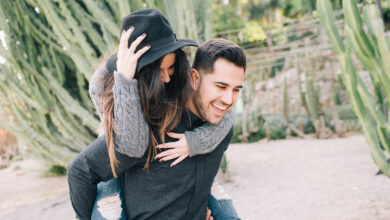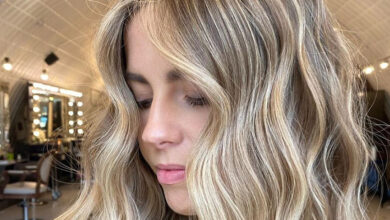How to help reduce the risk of bruising following cosmetic injectable procedures
The appearance of bruising, following an injectable procedure, is very common, no matter how skilled the cosmetic doctor or ‘resilient’ the skin of the patient. After receiving an injectable treatment, bruising happens when the needle or even a cannula ‘knicks’ a blood vessel. This in turn allows blood to leak below the skin’s surface, causing the surface of the skin to appear as purple or a reddish colour.
Bruising from anti-wrinkle injections is rare, as the needles used are extremely fine and the depth of injection, fairly shallow, whereas with dermal fillers, bruising can be more common, due to the depth of injection, necessary in many of these procedures and the more invasive nature of the delivery of product, even though it is still seen as a non-surgical alternative to surgery.
Bruising can occur in a multitude of different patterns and itself can vary over time in depth, colour and distribution, so it is very difficult to give a solid opinion. These kind of marks from anti-wrinke injections itself is generally unlikely to occur and the pattern of bruising seen in this case doesn’t fit the typical anti-wrinke injection sites, as bruising from these procedures tends to be more pinpoint and less diffuse in nature. Filler injections tend be to placed deeper than anti-wrinke injections and may give more of a widespread pattern of bruising should it occur as shown. However, there can be a bruise pattern which may be a result of a filler treatment for an under-eye tear trough deformity.

Though bruising can occur and in many cases, cannot be helped, there are ways in which you can reduce the risk of such bruising and ways to assist with a faster healing time according to Dr Dan Dhunna of the Botox London clinic.
Cutting any alcohol consumption three to four days prior and 24 hours, following your injectable procedure can significantly help reduce the risk of unwanted side effects. Alcohol thins the blood and causes the blood vessels to dilate. This increases your chances of bruising as well as swelling, after an anti-wrinke injection or dermal filler treatment. Avoiding alcohol before and after these treatments can also help you to achieve optimal results, faster, with less bruising and swelling.
Although some pain relief such as paracetamol can be handy after an injectable treatment, to ease any tenderness at the injection site, taking blood thinning pain killers such as ibuprofen or aspirin, could increase your risk of bruising, for the same reason that alcohol increases the risks.
Taking arnica before your injectable treatment and using arnica gel to treat any small bruises can be a help. This supplement has been used for centuries for its anti-inflammatory properties. Not only can it minimise the risk of swelling and bruising, before an injectable treatment, but can also speed up the healing process, should this occur after your anti-wrinke injections or dermal filler procedure.
Avoiding hot steam, saunas, baths or anything that will overheat you, such as strenuous exercise, can minimise bruising and swelling. This all should be avoided for at least 48 hours, following anti-wrinke injections or dermal filler treatment.
Using a good old-fashioned ice pack can help minimise bruising after your anti-wrinke injections and filler treatment, as this cools the injection site, as it constricts the blood vessels and decreases blood flow to the affected area. In some cases, ice may be used before your injectable treatment, to assist with swelling, bruising and even the sensation of the needle or cannula.

Dr Dan Dhunna swears by using Auriderm, a vitamin K oxide bruising cream, following your anti-wrinke injections or dermal filler treatment. Another God send, Bromelan (pineapple extract) has the same anti-inflammatory effect as Arnica but has medical-grade strength, to speed up healing and prevent too much swelling and bruising. It’s good to know the real experts in the industry have these tools to hand and know when and how to use them.
Before you begin frantically copying this article to remember all you need to, about the avoidance of bruising and swelling, after your injectable procedure, fear not! In a no obligation, initial and in-depth consultation, Dr Dan Dhunna will explain not only what you need to know about the procedure, results, recovery time and the expected longevity of your results, but he will also advise you on before and aftercare protocols that you should follow, to minimise any unwanted side-effects of this nature.
He will also check your medical history to ensure that you are physically fit and able to have an injectable treatment safely. There are many medications which can increase the risk of bruising and bleeding, such as clopidogrel, aspirin and warfarin, which are some of the more common meds for cardiovascular conditions. Other medicines that can increase the risk of bruising, following anti-wrinke injections or dermal fillers include dabigatran, ticlopidine, enoxaparin and dipyridamole. Therefore, it’s vital that you disclose any medical conditions and medications at your pre-treatment consultation.
It’s also really important to take in to consideration, the timing of your injectable treatments, so that you can enjoy your results without having to apply heavy makeup or hide beneath a large hat or huge sunglasses, at that long-planned wedding, party or even a holiday. Dr Dan Dhunna advises having any injectable treatment, even anti-wrinke injections at least two weeks before a special occasion, so that you can allow time for any bruising or swelling to subside. You can also enjoy better results after two weeks and look fresh, youthful and stunning for your gathering or getaway.
To see your company in any upcoming features we are arranging please email editorial@hurstmediacompany.co.uk







